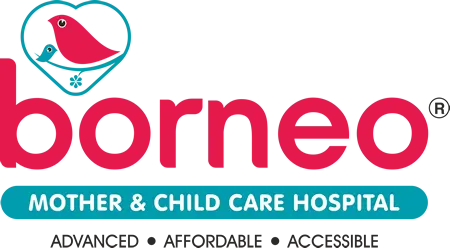Retinopathy of prematurity (ROP) is a condition in which the retinal blood vessels are damaged. This leads to the detachment and subsequent loss of vision. ROP is one of the leading causes of blindness in children under one year old, accounting for nearly 50% of all cases. It is caused by premature birth and low birth weight. The risk factors include being born prematurely, having a low birth weight, or being born to a mother with high blood pressure during pregnancy.
The prevalence of ROP among premature infants is high. In fact, 80% of cases are diagnosed in babies born before 28 weeks gestation. The incidence of ROP increases with gestational age, so only 25% of the cases are diagnosed in babies born at 28 weeks or later.
Retinopathy of prematurity (ROP) is a leading cause of blindness in children born prematurely. This condition is characterized by abnormal blood vessel growth in the retina, which can lead to permanent vision loss. ROP has three stages: pre-clinical, clinical, and late clinical.
- The preclinical stage is when the retinal veins are still normal but the vessels may be slightly dilated; this stage is not associated with significant vision loss or visual impairment.
- The clinical stage starts when there are abnormal changes in the blood vessels in the retina and vision begins to deteriorate; this stage can also be referred to as ROP grade 1.
- During late clinical ROP, there are additional changes in the retina that result in irreversible vision loss or visual impairment.
What are the Causes of Retinopathy of Prematurity?
Retinopathy of prematurity (ROP) is a condition that affects the eyes of premature babies. It can also be called retrolental fibroplasia or retrolental fibroelastosis. The condition causes the retina to detach from the back of the eye and leads to blindness.
This condition is caused by a lack of oxygen, blood flow, and nutrition to the eyes in a premature baby. This lack of oxygen, blood flow, and nutrition can happen in different ways – such as prematurity or low birth weight. For most babies, the causes can be attributed to oxygen deprivation in utero (during pregnancy) or premature birth. In some cases, a genetic mutation could be the cause of ROP.
There are many factors that contribute to ROP including prematurity, low birth weight, maternal age over 35 years old, maternal diabetes mellitus with uncontrolled blood sugar levels during pregnancy, gestational diabetes mellitus with uncontrolled blood sugar levels during pregnancy, maternal hypertension with uncontrolled blood pressure during pregnancy , and obesity. For a fetus at risk of ROP, doctors recommend that women avoid smoking and use appropriate birth control during pregnancy. Treatment for ROP usually consists of surgery to remove the affected eye, but sometimes it is possible to control the disease with medication before surgery is needed.
There are other reasons for an infant to develop ROP, including:
- Too much time spent in an incubator
- A premature birth weight greater than 2 kg
- A head injury
- Smoking during pregnancy
What Are the Signs and Symptoms of Retinopathy of Prematurity?
The signs and symptoms of ROP include: decreased visual acuity, increased sensitivity to light, blurred or double vision, floaters (small specks that float around), dark spots on your field of view ( scotomas), and tunnel vision. ROP occurs in 1 out of every 10,000 births. Diagnosis of ROP is primarily made by a retinal examination which will reveal the abnormal vascular growth in the retina. If the child has any signs or symptoms of ROP, they may also be referred to a pediatric ophthalmologist for an eye exam and further diagnosis.
How ROP Can Impact Your Baby’s Development?
The eyes are the window to the soul. In fact, they are the first thing babies see when they enter this world. Babies’ eyes develop differently from an early age, and a lot of factors can impact their development. One of them is ROP syndrome or retinopathy of prematurity. It is a condition that occurs in premature infants due to abnormal blood flow in their retinal arteries and veins.
ROP syndrome affects a baby’s vision and how it develops. The condition can lead to blindness or severe visual impairment if not treated properly and early on in these babies’ lives. This is why it is important for parents to be aware of ROP syndrome so that they can take necessary precautions while caring for their premature infants at home as well as at the hospital.
The retina is a thin layer of tissue located at the back of the eye. It is the part at the outside of your eye that converts light into nerve impulses, which are then transmitted to your brain where you see. There are two membranes that cover it: The sclera, which is white and thick, and the retina, which is clear in color. Because babies’ eyes develop differently from an early age, there are many factors that can impact their development. One of them is ROP syndrome or retinopathy of prematurity. This condition occurs due to abnormal blood flow in their retinas.
ROP syndrome can cause vision loss and blindness in babies who survive their premature births. Retinopathy of prematurity is also a common condition that affects adults born prematurely, but they often recover fully or have only minor vision problems. Retinal detachment occurs when the retina separates from the back of the eye and becomes loose, causing some bleeding in your eye. Because this condition involves bleeding, it can be serious and requires immediate attention to prevent further damage to your eye’s health.
Handling an ROP Diagnosis for Yourself or Your Baby-
Retinopathy of prematurity (ROP) is a condition that can be treated. If caught early enough, treatment options for babies with ROP can greatly improve the chances of vision recovery. The most common treatment options for babies with ROP are laser therapy, surgical interventions, and photocoagulation. However, there are also other non-surgical treatments that may be an option depending on the severity of the case.
The treatment for ROP includes keeping your child’s eyes clean and reducing the risk factors that cause it, such as malnutrition. Your physician may prescribe topical or oral corticosteroids to reduce inflammation, as well as antibiotics to prevent infection. If there is a further threat of vision loss due to damage from the disease, your physician may prescribe a surgery to remove the extra tissue or a laser treatment to destroy it.


